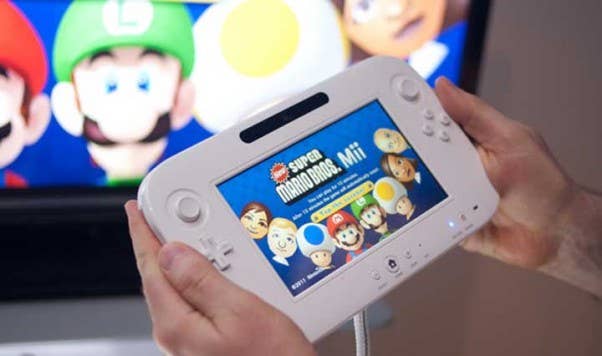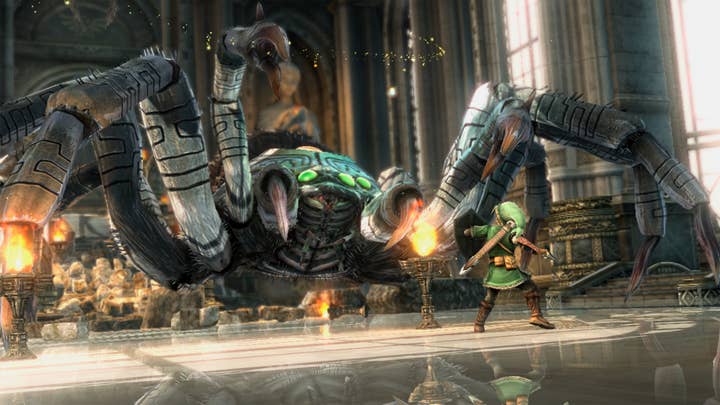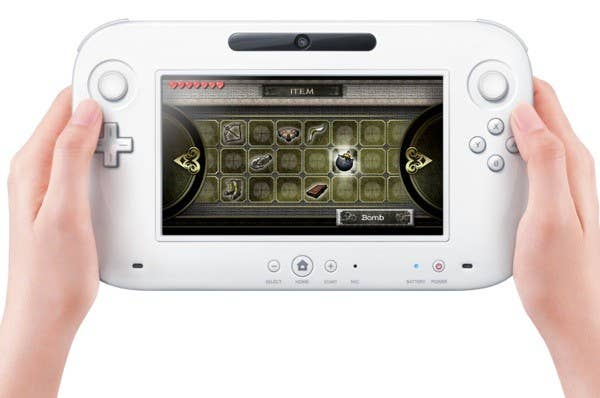Wii U less powerful than PS3, Xbox 360, developers say
Sources say that Nintendo's new console is not even equal to the current generation
Nintendo's upcoming Wii U console may generate full HD graphics, but it's not up to the graphics power of the Xbox 360 or the PS3, according to developers familiar with the hardware who spoke on a condition of anonymity to GamesIndustry International.
"No, it's not up to the same level as the PS3 or the 360," said one developer who's been working with the Wii U. What does that mean? "The graphics are just not as powerful," reiterated the source.
This developer is not alone in their opinion. Another developer at a major company confirmed this point of view. "Yeah, that's true. It doesn't produce graphics as well as the PS3 or the 360," said the source. "There aren't as many shaders, it's not as capable. Sure, some things are better, mostly as a result of it being a more modern design. But overall the Wii U just can't quite keep up."
"There aren't as many shaders, it's not as capable. Sure, some things are better, mostly as a result of it being a more modern design. But overall the Wii U just can't quite keep up"
Anonymous developer
This may be a surprise to some consumers, who could be expecting that with a new console design five years later than the Xbox 360 or PS3 designs, that Nintendo should be able to produce more raw power than those consoles. It's not quite that simple, though. Cost and graphics power are generally tightly linked. Graphics on the cutting edge of chip technology is going to be more expensive.
Taking the latest generation of Nvidia GPU and pairing it with a powerful CPU and plenty of high-speed RAM is relatively straightforward engineering, but you could easily produce something that would cost $1000 or more at retail. The real test is in how much graphics capability you can produce at a given retail price, and the target price for a new console these days is likely to be fairly low.

Nintendo is also hampered in some ways by the tablet controller. Putting something innovative into a new console is pretty much expected, and the tablet controller is Nintendo's big innovation for the Wii U, not raw horsepower. The tablet controller, with its color LCD touchscreen, is not going to be an inexpensive component. This would tend to push the price of the Wii U (which consists of a Wii U console plus a single tablet controller, according to sources) higher; keeping the retail price of the whole package low means cutting back on the capability of the GPU, CPU, RAM and other components in order to keep the price at the desired level.
What is that level? Nintendo hasn't said yet, but certainly the continued weakness in the retail market for console hardware and software (down 8% last year in both the US and Japan) indicates that consumers will not be enthusiastic about high prices for new consoles.
Nintendo has been focusing their public statements about the Wii U on innovation, and game design quality, and offering a unique experience. Those are good things, but at the same time they have avoided direct power comparisons between the Wii U and the current competitors, the Xbox 360 and the PS3. This implies that at the least the Wii U does not have a strong graphics advantage over the competition; if they did, why wouldn't Nintendo want to shout that from the rooftops?

Nintendo seems at this point to be making the tablet controller, not horsepower, the key selling point of the Wii U. According to sources, there are some issues with the tablet controller that may be a factor in how the customers like it.
"The whole thing about the tablet controller is that you only get one of them, and you can only use one and it's not completely independent," noted the source. "The base console has to be on, and you have to be in range." Queried about other controllers, the source was clear: "Other controllers are just Wiimotes, or other Wii controllers. They may change the form factor or looks a bit, but it's the same controller."
This means that one player using the tablet controller will be having a somewhat different experience than other players on the same console. Nintendo has shown several Wii U games that make interesting use of this, where the player with the tablet controller has a different view and different goals than the other players, or is competing directly against the other players. However, what if you've got 2 or 3 or 4 players who all want to play Call of Duty on the Wii U, and the tablet controller offers some advantage (or puts you at a disadvantage)? Will there be arguments, and will that affect satisfaction with the console?

Some developers are looking at the PS3/PS Vita combo as being more powerful than the Wii U with tablet controller, and easier to program, too. "You can do everything with that combo that you can with the Wii U, and more," said the source. Nintendo's bid for a unique play experience with the tablet controller may not be completely successful.
The key issue of console price versus performance is definitely a difficult one for Nintendo. Unless they can price the Wii U very low, Microsoft and Sony will probably be able to price their consoles below the Wii U, and they may well want to do that in the Wii U's first holiday selling season. Will Nintendo be able to convince hard-core gamers to buy the Wii U if it offers somewhat less power at a higher price?
Or, indeed, what would any consumer think of slightly less power at a higher price? This would force Nintendo to make sure the innovations of the tablet controller (and perhaps other features) are compelling enough to make the Wii U a desirable buy despite the price. Many fans would probably buy a Wii U if they could get a new Legend of Zelda game with HD graphics; but are their enough of those fans to make the Wii U a hit? Will Nintendo even have one ore more of its iconic brands available in a game at the Wii U's launch?
These critical questions are likely to receive some answers at E3 this year.

